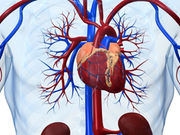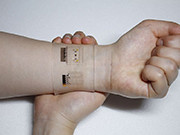Incretin-Based Drugs Don’t Up Heart Failure Hospitalization Risk
Rate of hospitalization for heart failure not up among those with or without a history of heart failure
BPA Alternative, Bisphenol S, Can Induce Fat Cell Formation
BPS induces lipid accumulation and differentiation of primary human preadipocytes
MODY1 Form of Diabetes May Require Alternate Treatment
Mutations in HNFα cause Mature-Onset Diabetes of the Young 1, with diminished GSIS
Sweat-Sensing Device Designed to Regulate Glucose Levels
Experimental technology senses blood glucose and delivers medicine with microneedles
Exercise Prevents Diet-Induced Cell Senescence in Adipose Tissue
In experimental study, prevents senescent cell accumulation, phenotype expression
FDA: Most Powdered Medical Gloves Should Be Banned in U.S.
Side effects include airway and wound inflammation, agency says
Case Report: Immobility-Induced Hypercalcemia in Infant
Infant presented with fatigue, irritability, failure to gain weight after prolonged immobilization
Highest Diabetes Prevalence in Poorest Countries
Wealthiest countries have lowest prevalence; gradient persists after adjustment for all risk factors
Case Before Supreme Court May Expose Doctors to Large Fines
Case surrounds whether liability under IFPA can be based on what a practice should have known
Diabetes Management Program Doesn’t Cut Disparities in Care
Disparity for African-Americans and Latinos versus whites persisted after intervention



















